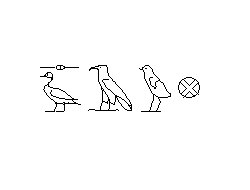
City in the western Delta, the remnants of which date mainly to the 8th-6th centuries BC. Its protective goddess was Neith, whose cult dates back to the 1st Dynasty, which suggests that Sais was inhabited from the late Predynastic Period.
Sais was already an important religious centre in the early Dynastic Period, and the 'feast of Athena (Neith)', 'the feast of the lamps' and the Osiris passion play, held on the sacred lake at Sais, were all mentioned by Herodotus. Herodotus also records that there was a tomb of Osiris within the walls of the temple precinct of Neith. Sais was one of the mythological destinations in burial rituals, and had a reputation as a centre of surgery and weaving.
Politically, Sais only became important after local rulers briefly opposed the Kushites in the last quarter of the 8th century BC and founded the 24th Dynasty. After Esarhaddon's invasion of Egypt in 671 BC, Necho was installed as the ruler of Sais and Memphis. His son Psammetichus I was able to preserve that independence and even gained control of all Egypt. He founded the 26th Dynasty with Sais as his residence.
Sais has never been systematically excavated. The remains of temples and tombs described by Herodotus and mentioned by Strabo have almost completely disappeared.